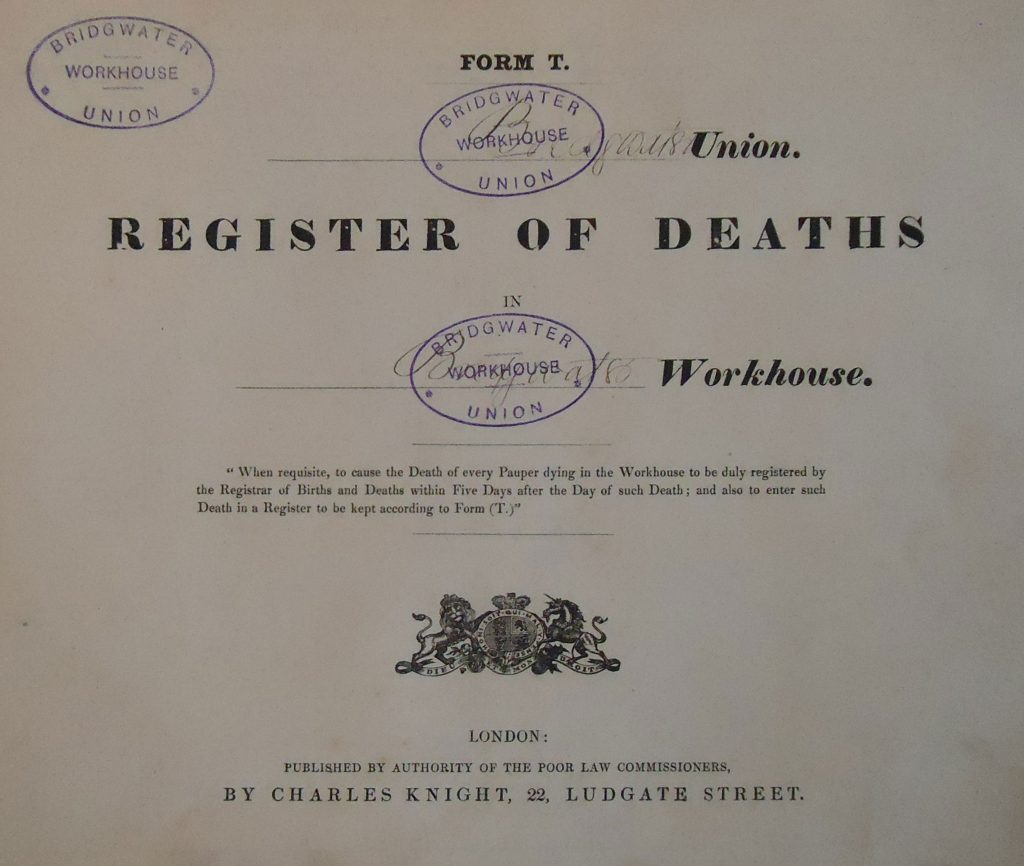
Thanks to the hard work of Susan Potts-Bury, we now have a full transcript of the Bridgwater Union Workhouse Register of Deaths 1866-1913, which can be found in the members section of the website. This ledger, issued by the national Poor Law Commissioners, was intended to record all the deaths that occurred within the Bridgwater Union Workhouse, and where the bodies were subsequently buried.
Much of the information can already be found within the burial registers of St Mary’s church for the Wembdon Road Cemetery, but this register also lets us know where the inmates originally came from. We also learn of many individuals ‘taken out’ by friends or relatives, for private burial. Some of these turn up in the Dissenters register for the cemetery, others must have ended up in their parish churchyard or separate dissenting burial grounds.
The majority of Workhouse burials took place within the Pauper’s Ground in the Wembdon Road Cemetery. However, in May 1877 we see a number of burials taking place in Chilton Trinity Churchyard, and from July that year until January 1880 all burials took place in the churchyard. The Bristol Times and Mirror for 17 May 1877 notes that ‘the portion of the Bridgwater Cemetery allotted for [Pauper burials] was now full’. Where the additional burials in the Wembdon Road occurred after 1880, when they resumed there in force, is unclear, as an extension was not added to the cemetery until 1895 (or at least that is when the conveyance was made).
Record keeping within the workhouse appears to have partially broken down in 1898-1899. Across six pages of the registers, entries from previous pages are duplicated. It seems that there was a change of Workhouse Master because some the pages headers do not have a name to say who is in charge. It looks like someone tried to write the register up whilst waiting for a new Master to take over and got in a muddle while doing so. A second puzzling anomaly with this register is that the year 1911 is completely omitted, although it could be those pages were missed when photographs were taken a number of years ago.
It is unclear how deaths in the workhouse were recorded prior to 1866, the Northgate building having been built in 1836.We hope you find this resource helpful in your research!
